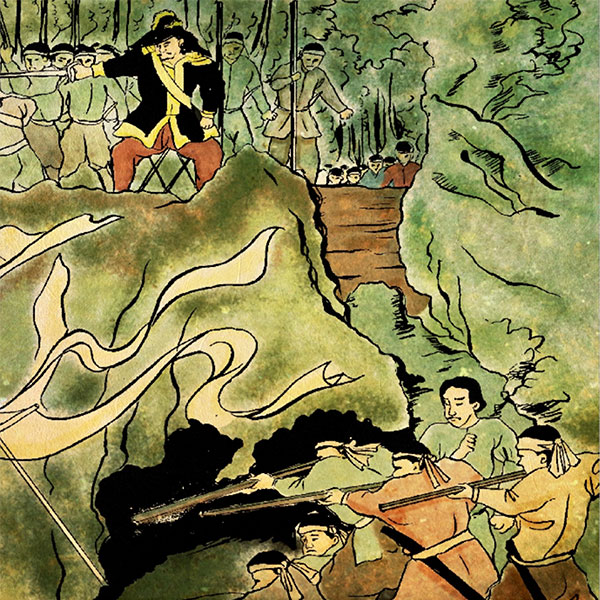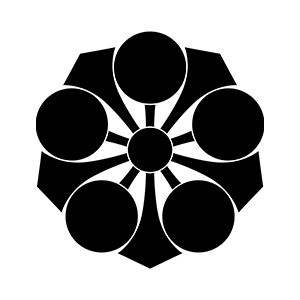- Hitoyoshi domainThere are many disturbances at home
- The Hitoyoshi domain was a domain located in the Kuma region in the southern part of Kumamoto Prefecture. The Sagara family served as the lord of the Hitoyoshi domain from the opening of the domain until the Meiji Restoration. In addition, the Sagara clan is a powerful family that has ruled this area since the Kamakura period, and one family lived from the Kamakura period to the Meiji period.

Hitoyoshi CastleHitoyoshi City, Kumamoto Prefecture
- spring
- summer
- autumn
- winter
- TOP
- Kyushu
- Kumamoto Prefecture
- Hitoyoshi Castle
| Other name | Kuma Castle, Gyuma Castle, Senzuki Castle, Mikazuki Castle |
|---|---|
| castle construction | Genkyu period (1204-1206) |
| address | Rokumachi, Hitoyoshi City, Kumamoto Prefecture |
| telephone number | 0966-22-2324 |
| Opening hours | Currently closed |
| Admission fee | free |
- Access to Hitoyoshi Castle
- Approximately 4 minutes by bus or 7 minutes walk from JR Hitoyoshi Station
*Hitoyoshi Station is currently closed.
HISTORYHitoyoshi Castle, which was also the stage of the Seinan Rebellion
Hitoyoshi Castle is a castle ruin located in Fumoto-cho, Hitoyoshi City, Kumamoto Prefecture. Although only part of the stone wall remains today, it was the setting for historical events, such as Saigo Takamori setting up camp during the Satsuma Rebellion. Nowadays, it is also known as a famous spot for cherry blossoms and autumn leaves. Let's unravel the history of Hitoyoshi Castle.
- Hitoyoshi Castle until the Edo period
- The predecessor of Hitoyoshi Castle was a castle that Nagayori Sagara, a native of Sagaraso, Totomi Province, who served Minamoto no Yoritomo, plotted to kill a vassal of Taira no Yorimori, Yase-shu Umayu, seize the territory and castle, and expand it himself. . During the construction of the castle, stones with crescent-shaped patterns were unearthed, which led Hitoyoshi Castle to have other names such as ``Crescent Castle'' and ``Sengatsu Castle.''
The Sagara clan continued to rule this area even after the end of the Kamakura period and into the Muromachi period, and unified the Ma region during the Sengoku period. It is extremely rare for one family to continue to control the same land for over 300 years. During that time, Hitoyoshi Castle was also repeatedly renovated, and the 19th head of the castle, Yoshihiro Sagara, began major renovations in the Tensho era. This major renovation was interrupted due to various circumstances, but was finally completed in 1623 by Yorihiro Sagara, the 22nd head of the family. Meanwhile, in 1581, the Sagara family submitted to the Shimazu clan, which took control of Kyushu, and became its vassals. Six years later, in 1587, when Hideyoshi Hashiba invaded Kyushu, the 20th head of the family, Yorifusa Sagara, fought bravely, but was defeated. Afterwards, his vassal Nagatomo Fukami was relieved of his territory through negotiations with Hideyoshi Toyotomi. .
At the Battle of Sekigahara in 1600, he sided with the western army, but when Ishida Mitsunari was outnumbered, he sided with the eastern army, and Tokugawa Ieyasu gave him 22,000 koku of territory. This is how the Sagara clan became a daimyo. - Hitoyoshi Castle in the Edo period
- During the Edo period, Hitoyoshi Castle functioned as the domain office of the Hitoyoshi clan. In 1623, during the era of Yorihiro Sagara, the 22nd head of the clan, the major renovation of Hitoyoshi Castle, which had been continued since the 19th head of the clan, was completed. It was characterized by the natural moat of the Kuma River, said to be one of Japan's three major rapids, and its tributary, the Musume River, as well as the construction of numerous docks for water transport. It is recorded that no castle tower was built, and that a Goma-do hall was built instead.
However, in 1862, a large fire called the Torasuke Fire occurred, destroying most of the castle buildings and most of the castle town. Afterwards, a part of the rebuilt stone wall was constructed using the European castle construction technique known as the "Okinide construction method." Mushagaeshi is a piece of equipment similar to a rat-gaeshi that can prevent people from climbing over castle walls and easily make attackers fall. The only other castle walls with Musha Gaeshi are Goryokaku in Hakodate and Tatsuoka Castle, and Hitoyoshi Castle is the largest in terms of scale. - Hitoyoshi Castle after the Meiji period
- In the Meiji era, Hitoyoshi Castle was abandoned due to the abolition of feudal domains and establishment of prefectures. Later, during the Satsuma Rebellion in 1877, the castle became a base for the army led by Takamori Saigo, and the palace and turret, including the buildings rebuilt at the end of the Edo period, were completely burnt down. However, the Horiaimon gate is the only one remaining, and it was moved to a private house in the city and still exists today. Afterwards, the castle ruins were developed into Hitoyoshi Castle Park and designated as a national historic site.
In the Heisei era, the Sumiyagura, Otemon, Wakitamon turret, and Tsuzuki fence were restored, and the Hitoyoshi Castle History Museum was opened. The remains of a stone crypt have been preserved in the historic building.
It was designated as one of Japan's top 100 castles in 2006, but the castle ruins suffered major damage due to heavy rain in 2020, and access was restricted for a long time due to restoration efforts. However, most of it was restored in 2023. However, Tamon Yagura and Kaku Yagura are still prohibited from entering. - summary
- Hitoyoshi Castle is very rare among Japanese castles, and the remains of the castle have been renovated and renovated by the Sagara clan since the Kamakura period and remain to this day. Although it is a modern castle ruin, there are still traces of a medieval castle ruin, and you can feel the history of Japanese castles. It is known as a cherry blossom viewing spot in spring, and the castle ruins are a tourist attraction where you can see a panoramic view of the city. Please note that restricted areas are announced on Hitoyoshi City's official website from time to time, so please check this before visiting.
Read about incidents related to Hitoyoshi Castle
- Seinan WarThe final battle of the samurai: Takamori Saigo vs. the government
- After the Boshin War ended in 1869, the new government (Meiji government) carried out a series of reforms. Meanwhile, a rebellion led by the samurai class under the banner of Saigo Takamori took place from February 15 to September 24, 1877.

History of the Hitoyoshi clan, whose domain was Hitoyoshi Castle
| Domain office | Hitoyoshi Castle |
|---|---|
| old area | Hitoyoshi Village, Kuma District, Higo Province |
| stone height | 22,000 koku |
| Fudai/Tozama | Foreigner |
| main lord | Sagara family |
| Estimated population | 54,000 people (first year of the Meiji era) |


















